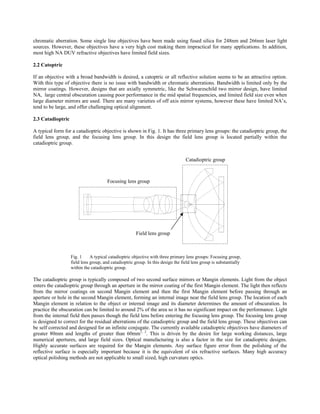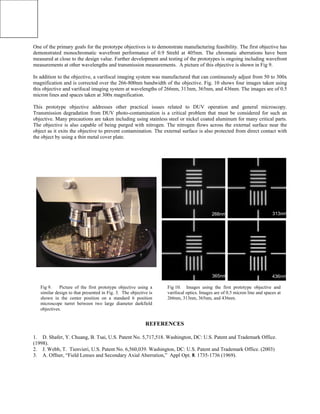New small catadioptric microscope objectives have been developed to achieve high numerical apertures and broad bandwidths for applications in DUV imaging and life sciences. These designs focus on reducing alignment tolerances and manufacturability while being cost-effective, addressing various microscopy needs including semiconductor inspection and high-resolution imaging. The objectives provide versatility with capabilities to correct for temperature variations and chromatic aberrations, contributing to improved optical performance across different applications.






